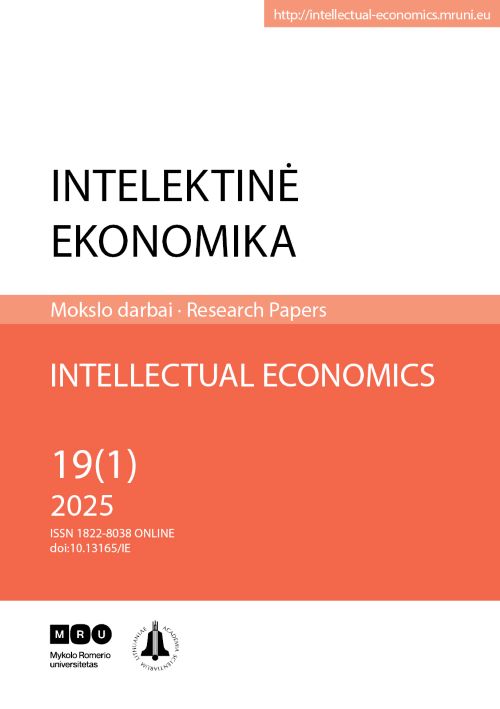During extreme market conditions: a comparative study of advanced GARCH specifications
##plugins.themes.bootstrap3.article.main##
Abstract
Purpose. This study investigates the performance of advanced GARCH-family models in forecasting cryptocurrency volatility during extreme market conditions. It aims to determine whether volatility in major digital assets is primarily endogenous and asset-specific, and to identify which modelling approaches offer superior predictive accuracy across different volatility regimes.
Methodology. Using a Leave-One-Crisis-Out (LOCO) cross-validation framework, we evaluate five GARCH-type models—GARCH, EGARCH, GJR-GARCH, CS-GARCH, and MS-GARCH—across three major cryptocurrencies: Bitcoin (BTC), Ethereum (ETH), and Binance Coin (BNB). High-volatility episodes are identified using realised volatility thresholds above the 90th percentile, and hyperparameters are optimised via grid search. The analysis spans daily data from August 2017 to June 2025, focusing exclusively on thresh old-based filtering after empirical evidence showed limited alignment between crypto volatility and traditional financial stress indicators such as the VIX.
Findings. The results reveal that cryptocurrency volatility is largely endogenous and decoupled from traditional market stress, supporting the “crypto exceptionalism” hypothesis. Volatility patterns are highly asset-specific, reflecting the distinct roles and market structures of each cryptocurrency. Regime-switching (MS-GARCH) and component (CS-GARCH) models consistently outperform traditional specifications in forecasting accuracy, particularly for BTC and ETH. However, convergence issues in MS-GARCH for BNB highlight the need for model-specific diagnostics and asset-tailored approaches.
Originality. This is the first study to apply a LOCO-based stress-testing framework to evaluate GARCH-family models under extreme cryptocurrency market conditions. It contributes to the literature by demonstrating the limitations of traditional financial stress indicators in crypto volatility modelling, highlighting the heterogeneous nature of digital asset dynamics, and offering a robust methodology for volatility forecasting in high-risk, rapidly evolving markets during extreme market conditions.
Keywords: Cryptocurrency volatility, GARCH models, Regime-switching, Volatility forecasting, Extreme market conditions.
JEL index: C22, C53, G17
##plugins.themes.bootstrap3.article.details##

This work is licensed under a Creative Commons Attribution 4.0 International License.
Authors contributing to Intellectual Economics agree to publish their articles under a Creative Commons Attribution 4.0 International Public (CC BY) License, allowing third parties to share their work (copy, distribute, transmit) and to adapt it, under the condition that the authors are given credit, and that in the event of reuse or distribution, the terms of this licence are made clear.


 https://orcid.org/0009-0006-8837-6580
https://orcid.org/0009-0006-8837-6580





